
HOME
ENTER The HiddenLighthouse

All 180 Blog Posts for this Blog
The language of the universe is that of analogy. We must understand how to interrupt the symbols, numbers, patterns, shapes, colors, etc. It quite simple, once you get the concepts down! The most straight-forward approach to answering you is by explaining the general numerical symbols. First though, a few prerequisite ideals to make this even more simple!
Two forms of cognitive expression exist: exoteric and esoteric! The exoteric (exterior) perception consists of literal interpretations, the other, being esoteric (interior) perception which consists of metaphorical understandings. One is a fallacy, the other a truism. Secondly, the reason why this information is occult (hidden) is because people are afraid to look at it; we in turn allow it to remain away from the masses. Lastly, for reference I’ll be using the Hinduistic chakra (energy) system for a better point of reference. The template I’ve found makes it easier to understand the complex ideals.
The number 7 is the number of the universe according to Pythagoras. We see this number throughout our existence: 7 days a week, 7 continents, 7 seals of revelation, 7 seas, 7 wonders of the world, 7 notes of musical school, 7 days of creation etc. There are also 7 human traits with us. During meditation you can feel all 7 of your energy fields.
They are expressed as follows with the locative center: intuition (crown), intellect (3rd eye), honesty (throat), love (heart), emotion (solar plexus), sex (sacral), physical awareness (root). The ascending and/or descending order has much effect on the symbols. Keep this in mind. The number 7 is symbolized by a cube.
A schism was created after the formation of the human. This dualism created the battle of dark and light. The light is the spiritual natures (higher chakras- crown, 3rd eye, and throat) and the dark is the material natures (lower chakras- solar plexus, sacral, root). This duality is represented in the black and white checkerboard floor of Freemasonry. This is the battle of God and Satan.
For, the highest chakra (crown) has a blue-white color (heaven) and the lowest chakra (root) has a red color (hell). The heart (love) is in the middle of these worlds playing mediator (earth); which is the color green. That's where the Christians got heaven and hell from. Remember, the ancients said that we were dead here (the dead animal personality), trapped by time and space (inside a physical body) and only when we left here (died and out light set free), that were would be alive again. Pillars or obelisks also symbolize this ongoing struggle (Boaz and Jachin of Freemasonry).

The first dual creation was that of ADAM and EVE in the Garden of Eden. The archetype ADAM; containing 4 letters, was symbolized by a phallus [penis] and EVE; containing 3 letters, was symbolized by a Cteis [vagina]. These two figures symbolized the masculine and feminine traits. The free-masonic compass/ruler emblem represents this same dualism aforementioned. A peaked symbol was representative of masculinity. For ADAM was the compass penetrating EVE, the ruler.
Furthermore, apexes in nature were symbolic of a masculine identity (Mount Olympus) conversely; natural depressions (Underworld) were symbolic of a feminine identity. The need for darkness in order to find light is important. This darkness was created by Isis (moon); whom represents Mother Nature.
The monad was the Creator (sun); whom is always represented as being a father. The ancients understood that this separation from the monad (sun/spirit) into the introduction of a duad (moon/material) would create a chaotic world. The symbol for this chaos is the V or peace sign, which is also called the Law of Fives. This polarity created a composite creature, both animal and angel with an androgynous spirit.
They understood though, that this separation from knowledge into ignorance would create an opportunity for redemption. This we have the trinity. The triad, according to Pythagoras is the number of wisdom. Within us, we have 3 material energies and 3 spiritual energies co-existing. All symbols are neutral in their detached state, only when our consciousness is introduced; whether or not our intent perverts (black magic) or uplifts (white magic) the society with theses ideals. The idea of trinities comes from the sun cycles throughout the day (rising, noon, and setting).
Out of this observation came the Father (rising/blue) Son (noon/yellow) and Holy Ghost (setting/red). The Father represents the thoughts, the Son represents desires, and the Holy Ghost is action. Also, we have this same idea represented by the masonic ladder with its 3 rungs (emotionality, mentality, physicality).
The colors connect right into the chakras, being thoughts are the higher chakra(s) (intellect/intuition) [blue], desires; the middle chakra (emotions) [yellow] and action; the lowest chakra (physical awareness) [red]. The name SOL-OM-ON is a trilingual representation of the sun, the words OM and the city of the sun in Egypt ON. The triad is always symbolized by a triangle, the most perfect of all odd numbers.

The difference between MYTH and FABLE
A fable is a made-up story , usually expressing a moral or some other point of view. A fable is a story that can be considered literally true as opposed to the myth which is an inner symbolic reading.
A myth is an story that involves a higher power or entity. The gods, goddesses, and other supernatural beings who appear in myths are worshiped or revered. Within the culture that created it, the myth is considered sacred and represents an inner internal as well as cosmic truth.
What is a myth?
Mythology is a collective account of myths. Typically, the word “myth” evokes thoughts of ancient cultures, such as ancient Greek or Norse mythology. Many times myths help to explain the unexplainable or how things came to be. For example, the mythological Greek god Apollo carries the sun across the sky in his chariot, which is actually a symbol of the higher consciousness having taken root in the mind.
This would explain to ancient Greeks why the sun appears to move across the sky. The mythological Norse god Loki is another example. Loki is described as a trickster (the ego) and was often blamed for mishaps or disasters in a Norseman’s life. The myth is also attributed to more epic stories such as the Mesopotamian The Epic Gilgamesh, which is used as a way of explaining the creation of the world and humankind. All of which have an inner value of truth for the myth reader, but first you must have the keys to understand.
Does the word "myth" appear in the Bible? Yes, Dark sayings of old is what the bible refers to as MYTHOLOGY.
If you were to read the King James Version of the Bible you would not find the English word myth but you should not conclude that the Bible does not address the issue. In reality the word fable(s), and occurs five times in the New Testament.
The bible writers have been trying to lump the word myth and fable into the same category, and corrupt the meaning of things to further confuse those that earnestly read the bible, as opposed to just going to church, just as they have done with many verses, for example, "if your eye be single, your whole body will fill with light" Matthew. That is from King James, now see how that compares to niv and other bibles, the meaning has been completely distorted.
Matt 6:22 "The light of the body is the eye: if therefore thine eye be single, thy whole body shall be full of light,(God)."
In some bibles you will read the following
Be advised the religious ones keep trying to water down the third eye teaching. Look how they have changed the original Greek texts.
Matt 6:22 The lamp of the body is the eye: if therefore thine eye be single, thy whole body shall be full of light. (American Standard Version) This one is actually close.
Matt 6:22 "The lamp of the body is the eye; if therefore your eye is clear, your whole body will be full of light. (New American Standard)
Matt 6:22 "The eye is the lamp of the body. If your eyes are good, your whole body will be full of light. (New International Version)
Matt 6:22 "The lamp of the body is the eye. If therefore your eye is good, your whole body will be full of light. (New King James Version)
Notice how they use the words good, clear etc..taking away the original meaning.
Here is the original GREEK, it cannot be changed by them.
Ho luchnos tou soomatos estin ho ofthalmos.
The light of the body is the eye.
Ean oun ee ho ofthalmos sou haplous
If therefore be eye thine single
holon to sooma sou footeinon estai.
whole body thy full of light shall be.
This is the product of religion trying to continue to change the original texts for their own agenda, to keep you dimmed down.
The real meaning of the word fable in it's metaphysical sense.
Now, what does this biblical word mean? Strong says the word means "a tale, i.e. fiction : fable." Another adds, fable is "that which is fabricated by the lower mind in contrast to reality."In fact, in the New Testament, the primary use of this word denotes "a fable full of falsehood and pretenses."
It refers to the ego or lower mind and all of the thoughts that proceed from lower thinking, in biblical mythology a fable as well as old wives tales is making reference to this lower ego mind, it's a LIE.
So religion and bible publishers have tried to lump myth and fable together, this is blasphemous, because the bible IS largely MYTHOLOGY and NOT fables.
l Tim 1:4 Neither give heed to fables and endless genealogies, which minister questions, rather than godly edifying which is in faith so do
Titus 1:14 Not giving heed to Jewish fables and commandments o f men, that turn from the truth.
In both verses we are told not to heed fables. This Greek word means, to hold in the mind; pay attention to or have regard for. In other words, reject the fable. But that is not all. We are rather to PROMOTE THE TRUTH. This will lead to building up others.
Acts 19:19-20 Many of them also which used curious arts (lower mind activity) brought their books together, and burned them before all men: and they counted the price of them, and found it fifty thousand pieces of silver. So mightily grew the word of God and prevailed. FIVE refers to the five senses, silver is referencing the pineal gland of the brain. Do you see how clever the writer was.
NOTE, the word myth does not exist in the KJB nor the original Greek Septuagint, but other versions of the bible use the word myth in place of fable, and this is blasphemous, a myth is story about an inner spiritual truth. Joseph Campbell
2Pe 1:16 - For we have not followed cunningly devised fables, when we made known unto you the power and coming of our Lord Jesus Christ, but were eyewitnesses of his majesty.
Tit 1:14 - Not giving heed to Jewish fables, and commandments of men, that turn from the truth.
2Ti 4:4 - And they shall turn away their ears from the truth, and shall be turned unto fables.
What is a fable? In biblical terminology is is operating one's consciousness from the lower aspect, from the first three chakras of the body (the three little pigs).
The common meaning of fable outside of the bible.
Fables are short fictitious stories that often encompass a supernatural element. A fable is intended to teach a practical lesson — the so-called moral of the story. Fables often use animals to make their point, as in the fable of the tortoise and the hare or the three little pigs.
"For it was not mere stories of fancy that we followed when we told you of the power and coming of our Lord Jesus Christ, but we had been eyewitnesses of his majesty." The King James Version uses the word "fable." Charles Williams says they were "not mere stories of fancy." Most other versions use the word "myth." Which is incorrect. it is mythology, and it is describing that the Christ consciousness is very real, that this coming new mind is not mere fancy or fable talk, but a real change in the mind of a person.
"For we have not followed cunningly devised fables, when we made known unto you the power and coming of our Lord Jesus Christ, but were eyewitnesses of his majesty" (2 Pet. 1:16).
"For we have not followed cunningly devised fables
In other words it's true it's a real phenomena, but there's a catch.
The ewe witnesses are those that have seen a change come over you after you have been through a kundalini enlightenment experience, this is Christ consciousness, Buddha consciousness, Krishna consciousness, but it's not talking about the eyewitness of a figure outside of your own self, a man coming from heaven on a white horse with a sharp sword sticking out of his mouth, assuredly this is fanciful symbolism, which belongs in the realm of mythology, because mythology is the language used to describe spiritual truths, not fables.
Gasklells Dictionary of Scripture and Myth defines MYTHOLOGY thusly.
Mythology contains the symbolism of Divine emanation from the Absolute, and manifestation of spirit and matter in time and space through out the cycle of life.
The symbolism of the origin and growth of the soul, the descent of the spirit into matter in the process of involution, followed by the ascent of spirit from matter in the process of evolution. the symbolism of the five planes of being, and of the higher and lower natures, and of the four soul-bodies, the symbolism of the struggle in the soul/mind between the Divine principle or self and the lower principle (ego). not self.
And yet how strange are these tales! from the very childhood of philosophy, from the first faintly whispered why? To our own time of matured thought and inquiry, mythology has been the ever recurrent subject to ancient wonder and careful study.
Mythology passes for a further indication of a concealed, veiled or secret meaning, that some of these (Greek) fables are so absurd and idle, in their narration, as to show and proclaim an allegory, even afar off.
A fable is supposed to be invented for pleasure, or an imitation of history. But those fables that could never be conceived as real, must surely have a different use.
For example.
What a monsterous fiction is this; that Jupiter would take metis to wife, and as soon as he found her pregnant, eat her up, where he also conceived, and out of his headbrought forth pallus armed? Certaily no moral could, but for the sake of the moral it couches, invent such an absurd dream, so much out of the road of thought.
Jupiter is a symbol of the benefic directive function of the self, which leads, governs and initiates activities that go to the awakenment of ideas in the higher mind.
"I call upon the god jupiter, the brilliant, the glorius, at the time when it is in the form of a bull with golden horns, I call it most" Vendidad
meaning
"I acclaim the self, the fountain of light and truth, in this aspect of the positive, active, function of wisdom, whereby he will awaken aspirations for wisdom and truth in my mind and soul, I hold to MY ideals"
Wife is a symbol of the emotional nature (woman) in alliance with the mind (man).
"Therefore shall a man (mind) leave his father and his mother, and shall cleave unto his wife, and they shall be one flesh" Gen 2:24
The mind (man/Jupiter) recognizing a superior duality within itself, shall quit sense and desire , in it's lower parentage (mother and father) the ego nature. And go in search of the ideal higher emotions (feminine/woman) the twain are one when the mind and higher emotions are harmonius and at peace together.
The word wife has a dual meaning depending on the story it will mean either higher quality emotions (happiness and kindness/love), or lower emotions, such as screaming, yelling, quarreling, bodily harm and this kind of thing. This wife must be eaten up by the higher rational mind or no upward progress can be made. There has to be a sacrifice.
The sacrificer is the ego manifesting as mind allied with the emotional nature. he seeks the ideal on the Buddhic plane (sky) for the emotion nature in the regenerate soul/mind. When complete union is accomplishes between manas and buddhi, then the supreme goal is attained. "Wives (higher emotions) be in subjection unto your own husbands (mind) as unto the lord. For the husband (mind) is the head of the wife (emotions)" eph 22:23
Jupiter would take metis to wife, and as soon as he found her pregnant, eat her up, where he also conceived, and out of his headbrought forth pallus armed? Certaily no moral could, but for the sake of the moral it couches, invent such an absurd dream, so much out of the road of thought.
Jupiter (mind) would take metis to wife (emotions), and as soon as he found her pregnant (pregnant is a symbol of things being born out of mind, in this case, jupiters wife represents the lower emotions, sin, so the mind must eat, consume this lower thinking), eat her up, where he also conceived, and out of his head (mind/thought) brought forth pallus (lower thoughts) armed.
Pallus represents the egoic lower mind that is armed with all kinds of vileness, notice it was Jupiter himself that brought forth this wicked thing (pallus), from his own head (mind), because of dwelling in the lower emtotions instead of the higher emotions. So he ate her.
The myths of olden time are ALL discussing the state of the MIND.
On the subject of Greek symbolism, Bektor Siljestrom says; The Greek/Bible stories are thoroughly symbolical, and the wisdom that speaks from this mythology is so deep and so comprehensive that it is impossible not to see the actual civilization of thousands of years mirrored in it. Revelation and Mythology Wilkimson.
It has been well pointed out that myth and legend are truer than history for they take us to the INSIDE of things, whereas history only shows us the OUTSIDE. Joseph Campbell.
Moral lessons a very different from spiritual truths, it is spiritual truths that mythology is used to convey the timeless. Mythology is the language of the soul and of the mind.
In the King James Version of the New Testament, "μύθος" ("mythos") was rendered by the translators as "fable" in First and Second Timothy, in Titus and in First Peter.
And this rendering is wrong by the translators, they obviously had no idea of what the word MYTH meant.
A folktale, as its name suggests, is a story circulated among the common folk. Folktales are simple timeless stories that convey the customs, traditions, and beliefs of ordinary people. Like myths and legends, folktales are told orally and may change in the telling.
Folktales, however, usually do not attempt to explain natural phenomena, and they tend to be pure fiction; that is, they are not founded on a particular person, place, or event. In fact, folk-tales are often set in a distant time and place, beginning with a phrase such as “Once upon a time in a faraway land.” The fairy tale, including stories such as “Cinderella” and “Hansel and Gretel,” is a kind of folktale. Like legends, folktales do not have all of the essential elements of myths, so a myth can be a folktale, but a folktale is not necessarily a myth.
The "follow your bliss" philosophy attributed to Campbell
MYTHS are NOT the same thing as a Fable, as bible writers have proclaimed, lumping the word fable together with myth is blasphemous.
Function of Myth
Campbell often described mythology as having a fourfold function for human society. These appear at the end of his work The Masks of God: Creative Mythology, as well as various lectures.
The Metaphysical Function: Awakening a sense of awe before the mystery of being
According to Campbell, the absolute mysteries of life cannot be captured directly in words or images. Myths are "being statements" and the experience of this mystery can be had only through a participation in mythic rituals or the contemplation of mythic symbols that point beyond themselves.
"Mythological symbols touch and exhilarate centers of life beyond the reach of reason and coercion. The first function of mythology is to reconcile waking consciousness to the mysterium tremendum et fascinans of this universe as it is."
The Cosmological Function: Explaining the shape of the universe
Myth also functions as a proto-science, bringing the observable (physical) world into accord with the metaphysical and psychological meanings rendered by the other functions of mythology. Campbell noticed that the modern dilemma between science and religion on matters of truth is actually between science of the ancient world and that of today.
The Sociological Function: Validate and support the existing social order
Ancient societies had to conform to an existing social order if they were to survive at all. This is because they evolved under "pressure" from necessities much more intense than the ones encountered in our modern world. Mythology confirmed that order and enforced it by reflecting it into the stories themselves, often describing how the order arrived from divine intervention.
The Psychological Function: Guide the individual through the stages of life
As a person goes through life, many psychological challenges will be encountered. Myth may serve as a guide for successful passage through the stages of one's life. For example, most ancient cultures used rites of passage as a youth passed to the adult stage. Later on, a living mythology taught the same person to let go of material possessions and earthly plans as they prepared to die.
Campbell believed that if myths are to continue to fulfill their vital functions in our modern world, they must continually transform and evolve because the older mythologies, untransformed, simply do not address the realities of contemporary life, particularly with regard to the changing cosmological and sociological realities of each new era.
A mythology is a control system, on the one hand framing its community to accord with an intuited order of nature and, on the other hand, by means of its symbolic pedagogic rites, conducting individuals through the ineluctable psychophysiological stages of transformation of a human lifetime - birth, childhood and adolescence, age, old age, and the release of death - in unbroken accord simultaneously with the requirements of this world and the rapture of participation in a manner of being beyond time."
Myth lets you know where you are across the ages of life at 40 or at 80
For Joseph Campbell, the study of myth was the exploration of the possibilities of consciousness.
Joseph Campbell
CAMPBELL: Fantasy and imagination is a product of the body. The energies that bring forth the fantasies derive from the organs of the body. The organs of the body are the source of our life, and of our intentions for life, and they conflict with each other. Among these organs, of course, is the brain.
And then you must think of the various impulses that dominate our life system the erotic impulse; the impulse to conquer, conquest and all that; self preservation; and then certain thoughts that have to do with ideals and things that are held up before us as aims worth living for and giving life its value and so forth. All of these different forces come into conflict within us.
And the function of mythological imagery is to harmonize them, coordinate the energies of our body, so that we will live a harmonious and fruitful life in accord with our society, and with the new mystery that emerges with every new human being namely, what are the possibilities of this particular human life?
And mythology has to do with guiding us first, in relation to the society and the whole world of nature, which is outside of us but also within us, because the organs of our body are of nature; and then also, the guiding of the individual through the inevitable stages of life, from childhood to maturity, and then on to the last gate. And this is concerned with those matters.
MISHLOVE: So in a sense, behind every fantasy, behind every mythological story, there is some type of deeper truth about life.
CAMPBELL: Well, yes. A mythology is not just the fantasy of this, that, or another person; it's a systematized organization of fantasies in relation to the values of a given social order. So that mythologies always derive from specific social environments. And when you realize that every one of the early civilizations was based on a mythology, you can realize the force of this great, great heritage that we have.
MISHLOVE: You point out in your most recent book, The Inner Reaches of Outer Space, that we're coming to a period in time where our society is becoming global that we can't think of ourselves as a group of competing tribes any longer.
CAMPBELL: This is a crucial problem today. Every mythology and by mythology I include all religious spiritual books from every religion, has grown up within a certain social order. And today these social orders have come into collision with each other.
All you have to do is look at what's going on in the Near East now, and it's a horror. There are the three major monotheistic religions of the world, creating havoc. I've been in Beirut; it was once a glorious, beautiful, darling little city, and now it's just hell, because each of these units of religion thinks it has all the values on its side, and it doesn't know how to open up and recognize those are human beings also.
MISHLOVE: Their particular god is the one god, but it's the only one.
CAMPBELL: We've given them three names, you know; you have Judaism, Christianity, and Islam there. They're all right out of the same box. They can't get on together.
MISHLOVE: So what you're suggesting is that a lot of our social conflict results from the failure of the leaders of these communities to properly understand the role of their mythologies.
CAMPBELL: The role of their mythology has been to support their society. And they're hanging onto that. I think one could say there are two main types of mythology. There are mythologies like that of the Biblical tradition, which have to do with coordinating the individual into a group. He is a member of that group. He is baptized or circumcised or whatnot into that group.
And that is his realm of compassion and sympathy, and aggression he projects outside of that group. There's another kind of religion which grows out of the emotional life of the natural order. We are nature beings, after all, not members of a society primarily. Such religions as the Dionysian religions of ancient Greece; and Hinduism is full of this. And all the religions that have to do with meditation they're coming over here from the Orient.
MISHLOVE: And I suppose the shamanistic traditions as well.
CAMPBELL: That's also inward. But the main thing for people today are these religions of contemplation and meditation recognizing within you the powers that are those of the gods. You know, all the gods are simply projections of human potentialities. They're not out there. They're in here. That word, "The kingdom of heaven is within you," is a good word. And who's in heaven? God is. So where is he? Look in here. You have two kinds of religion that which is addressed outward like that, and that which is turned inward, here.
MISHLOVE: I've noticed, though, that the boundaries seem to be becoming more and more fuzzy in today's world. For example, the TV evangelists all the time seem to be talking about God speaking inside of them, and to the people in the viewers.
CAMPBELL: Well, good for them. I haven't heard them, and that's not the message I've heard when I have heard them. I've heard them saying it's in this book you know, the big black book.
MISHLOVE: I've heard it in a funny context.
And god did confound their language
CAMPBELL: It's certainly there, but not in the language that says it's only for this group, or in this group. I've been interested all my life in what we might call comparative mythology. And you see that what these people are saying in that language, these people are saying in this language, and they're getting mixed up, simply because their language is different. If you go into a bakery shop and say you want pain, they'll say, "Oh, we don't have that." But you're asking for bread, which is what they have. And that's the way it is, across the lines.
Now, I suppose one could say the prime, great example is the contrasts and affinities of Buddhism and Christianity. The idea of Buddha consciousness is that all beings are Buddha beings, and your whole function in meditation and everything else is to find that Buddha consciousness within and live out of that, instead of the interests of the eyes and ears. Do you understand what I mean?
MISHLOVE: Yes.
CAMPBELL: These can distract us from our own true, deepest being and purpose. And the goal of meditation is to find that inside, and then let that take control. Translate that into Christianity, that is finding the Christ in you. And it's exactly the same idea, and here they call it Christ consciousness; there they call it Buddha consciousness.
Well, the figures that represent the two ideas are quite in contrast, in that the Buddhist imagery concentrates on the pacific aspect, you might say you know, having found peace within and serenity.
Whereas the Christian, with Christ crucified, concentrates on the heroic attitude of living life which is tearing you apart, and finding the one within you, in the midst of the turmoil of the world. You have that in Buddhism also, in the idea of the Bodhisattva the one who has found the eternal within himself, and recognizes it in the world. And so they have a beautiful term: joyful participation in the sorrows of the world. You accept the sorrows for yourself and for the world, in the realization of what the radiance is that a well lived life can bring forth out of this. These are the same things one in the active, you might say tragic, aspect, and the other in the serene, fulfilled aspect.
MISHLOVE: It would seem as if paying attention to myths in this sense really brings out many subtle and deep emotions that we might not otherwise
CAMPBELL: Oh, listen, the way this hits deep, you see it all over the place. I've taught in a college for thirty-eight years, and this is my subject. And I've seen what it does. Students come in with their religions, and then you let them know what the religions are really talking about, and boy, something happens.
MISHLOVE: In your most recent book, The Inner Reaches of Outer Space, you seem to be suggesting that all of our science, all of our astronomy for example, is our modern myth, and that this too exists inside of us, the whole universe.
CAMPBELL: I would say that all of our sciences are the material that has to be mythologized. A mythology gives the spiritual import what one might call rather the psychological, inward import, of the world of nature round about, as understood today. There's no real conflict between science and religion. Religion is the recognition of the deeper dimensions that the science reveals to us. What is in conflict is the science of 2000 B.C., which is what you have in the Bible, and the science of the twentieth century A.D. You have to disengage the messages of the Bible from its science.
MISHLOVE: Scientific context.
CAMPBELL: The context that science is out of. For instance, the theme that constantly occurs to me in the Roman Catholic religion it is dogma to believe that Jesus rose from the dead and ascended bodily to heaven, and that his mother, Mary, in sleep ascended to heaven. OK?
MISHLOVE: I've seen it in television shows. They show him rising up.
CAMPBELL: And you know that going at the speed of light they would not be out of the galaxy yet. And you know what it means for a physical body to go up into the stratosphere.
MISHLOVE: So it's a great mistake
CAMPBELL: The image, the mythic image, does not fit the contemporary mind. So the message can't get into the contemporary body. You've got to translate these things into contemporary life and experience. Mythology is a validation of experience, giving it its spiritual or psychological dimension. And if you have a lot of things that you can't correlate with contemporary nature, you can't handle it.
MISHLOVE: And I suppose one of the first things to go with modern science is the idea that the gods and the heavens are somewhere out there in space.
CAMPBELL: Of course they're not. I mean, you've got I think they've got hundreds and hundreds of galaxies now, and clusters of galaxies, and so forth, and every galaxy as great, and some of them greater than our whole Milky Way, with our sun on the outskirts of one of these my God, you know. So then God is particularly the one who thought of this whole thing. Of course that's not the one in the Bible at all, because all he thought of was a three-layered birthday cake.
MISHLOVE: And yet doesn't it seem that some of the Hindus have anticipated this universe?
CAMPBELL: Oh, they've got it, they've got it, they've got it. Not only that, but they've got the cycles of the coming into being of stars, and their going out in grandeur. We've got a cosmic cycle of about what would it be? About twelve thousand years. This is ridiculous.
MISHLOVE: The Hindus seemed to know that there were cycles within cycles, and gods within gods
CAMPBELL: God knows how they found it out, but when you read the myths of the Puranas of India, the Mahabharata, there's no problem correlating that with modern science, no problem at all.
MISHLOVE: I have often wondered whether many of the myths of magical powers and the siddhis, or the psychic powers that appear in myths, aren't somehow evolutionary precursors of what we might become that the myths are guiding us into our future.
CAMPBELL: Well, insofar as they revealed potentialities of the human spirit, they are prophetic, because I think the human spirit is developing. I don't take a negative attitude toward what's happening with the human spirit. I take a very negative attitude with what's happening to our politicians, but that has nothing to do with the human spirit. I mean, the chaos in the world today is not a function of the illumination of humanity today; it's a function of the bungling of a bunch of self interested politicians.
MISHLOVE: It's ironic that as we seem to be getting in touch more as a culture with our deeper powers, we're also confronting deeper challenges.
CAMPBELL: That's right. And I think they'll probably work out.
MISHLOVE: One would have to assume though, if we're to solve the problem that's confronting the world today, that we will develop a new mythology that the old myths are no longer serving us in some sense.
CAMPBELL: There are two things that have to happen if you're going to have a mythology that's appropriate to man today. One is to take the world of nature as it is known, and my God, I've been hearing recently about some of the things that the physicists and astronomers are finding out, and it is magical and incredible.
That's the ground. It's not difficult to turn that into a mystical inspiration. And the second thing is to realize that the society with which you are involved is not this group or that group, or this social class or that social class, or this race or that race, but the planet. And we don't have a mythology for people recognizing the humanity of a person on the other side of the tennis net. So it'll come, it'll come; but it isn't here.
MISHLOVE: I've often wondered if some of the notions coming out of quantum physics, such as quantum interconnectedness, don't express that.
CAMPBELL: They do. You find all kinds of suggestions in the modern world of physics. And boy, you can translate them right into Sanskrit without any trouble. The Hindus have the whole thing already.
MISHLOVE: Yet there seem to be vast sections of our current culture that want to take the old religious myths literally.
CAMPBELL: Well, this is a disaster, and this is monstrous in what's going on today in the way of illuminating the mind, to go back to something that's four thousand years out of date, in every sense whatsoever in the sense, in the first place, of realizing what humanity is. They had no historical knowledge of anything but their own little corner of the Near East no knowledge of the Americas, no knowledge of the Far East at all. And to pull back in that, I think it's criminal. That's what I say.
MISHLOVE: And yet on the other hand, you pointed out as we started the interview that these myths are based on our bodily experiences, and our bodies haven't changed.
CAMPBELL: They are, but they have been translated
MISHLOVE: Into the culture.
CAMPBELL: into a local commitment. That's the point, when I speak of comparative mythology. This one sees it this way, this one sees it that way, but they're all talking about bread.
MISHLOVE: Let's talk a little bit more, though, about some of the underlying unities that occur in myth. For example, what are the common bodily experiences that we have to confront? I suppose part of our existential reality here in the world is the same, regardless of culture.
CAMPBELL: One existential reality is that of the mystery of birth. That's more than a biological phenomenon, believe me, the mystery of a new being coming in. And the next every culture, everywhere, forever, has had to bring that little nature phenomenon into relationship to a society. That's where the problem comes: Into what society are you going to bring this nature phenomenon?
And the local myths stress you're coming into our society, our way. That wouldn't be bad if the society didn't think of itself as the only one worth being incorporated in. Every society has had to guide this little biological phenomenon through the inevitabilities of growth, childhood, adolescence, then moving into marriage and this is something that right today is a disaster, just because the mythology of marriage has been forgotten.
MISHLOVE: Could you expand that, what you mean by that?
CAMPBELL: I will a little later. And then to move on from that to the release of yourself from commitment to the world, and passing on then. And that isn't a loss, it's a gain, when you realize that you're gaining an inward life. I mean, death is not loss. All it's losing is simply this passing phenomenon of a body. But the consciousness is becoming more and more of itself. Proper mythology tells you how to die.
MISHLOVE: And there are some universals there, aren't there?
CAMPBELL: Those are the universals. The problem of the relationship of this mortal, passing, phenomenal vehicle of consciousness to the mystery of consciousness, and finding this more enduring aspect of your life in yourself that's what the religions are talking about. And they personify that mystery you know, particularly in governing our lives, we have to have thoughts that govern us, certain images that we can target to. And these images then become the end. The Christ idea you put that before you, and it helps you to move to this thing which transcends the Christ idea. Do you understand what I'm saying? The myth is this side of the truth, but it leads you to it.
MISHLOVE: It's as if that Christ image is again one of these guiding images leading us into our own future nature, so to speak.
CAMPBELL: Yes, and think what else it does socially namely, the Christ image that is your life is the life of everyone else too. And so this relieves you of your sense of special ego privilege.
MISHLOVE: And I suppose really understanding the myth is when Jews or Arabs or Hindus can also appreciate that Christ essence within themselves.
CAMPBELL: Yes, they have the counterparts in their own religions, and it's a shame that that aspect is not accented. What is accented is the local value, not the universal value of the image that happens to be in the religious tradition.
MISHLOVE: One of the other trends within our culture, I suppose, is that individuals who see the horror of the religious wars would have us do away with myths completely.
CAMPBELL: Well, that's been the result. I mean, the word myth has come to mean lie because it is a lie to say that somebody has ascended to heaven. He hasn't. What is the connotation of that metaphorical image? That's a metaphor. And mythology is a compendium of metaphors. But when you understand a metaphor you know, just high school grammar language when you interpret the metaphor in terms of the denotation instead of the connotation, you've lost the message. That's like going into a restaurant and reading the menu and deciding what you're going to eat, and you eat that part of the menu. The menu is a reference to something transcendent of that piece of paper.
MISHLOVE: And I suppose, like a fine meal at a restaurant, when one really understands the connotations, one's life becomes far richer. There are so many flavors and tastes.
CAMPBELL: When you know what to order. You go in, you've been taught the message of this mythology, you might say, and this set of metaphors, and you know what to order.
MISHLOVE: I've had the sense from looking at your recent book, The Inner Reaches of Outer Space, that what your study of world mythology has led you to become in many ways, is a mystic.
CAMPBELL: Well, I'm not a mystic, in that I don't practice any austerities, and I've never had a mystical experience. So I'm not a mystic. I'm a scholar, and that's all. I remember when Alan Watts one time asked me, "Joe, what yoga do you practice?" I said, "I underline sentences." And that's all I'm doing. I'm no guru or anything of the kind. I've just had the great good fortune to find this golden world of myth, and I was also well trained in how to write a book. And so all I've done is gather what has excited me into my books, and by God, it works for other people just as well as it worked for me.
MISHLOVE: There's this sense in your writing, though, it reminds me of Walt Whitman when he talks about a leaf of grass.
CAMPBELL: He had the revelation. Whitman was in that sense a real poet. Mythology is poetry. If you read poetry as prose, what have you got?
MISHLOVE: Well, I don't want to add more to you than you wish to take credit for, but I have the sense in reading your work that there's a wonder to every little thing in the universe, every grain of sand, that kind of comes through in your own writing.
CAMPBELL: I have a beautiful Muse who has inspired all this. I don't claim it.
MISHLOVE: Well, I think you're being very modest.
CAMPBELL: That's very kind of you.
MISHLOVE: What would you want to tell people today young people, people who are coming into this world, in a different phase of life? You who are now into your eighties and who have gone through so much -- is there anything you could say in a few minutes?
CAMPBELL: How do you find the divine power in yourself? The word enthusiasm means "filled with a god," that's what it means. So what makes you enthusiastic? Follow it. That's been my advice to young people who ask me, "What shall I do?" I taught once in a boys' prep school. That's the moment for young boys or it used to be; I don't know what's going on now when they had to decide their life courses. You know, where are they going? And they're caught with excitement. This one wants to study art, this one poetry, this one anthropology.
But dad says study law; that's where the money is. OK, that's the decision. And you know what my answer would be where your enthusiasm is. So I have a little word: follow your bliss. The bliss is the message of God to yourself. That's where your life is. I remember when I was a student in Paris, at the University of Paris. I was studying philology- how Latin and vulgar Latin becomes transformed into French and Spanish and Italian.
MISHLOVE: It's a good thing for you you dropped out of that, I suppose.
CAMPBELL: Well, I'll tell you why. I was sitting in the little garden at the Musee de Cluny on Boulevard Saint Germain, and I thought to myself, "What use is all this knowledge to me, when I don't even know how to order a decent meal?" So I looked for the place where my bliss was, where I felt my life was, and that academic thing dropped off.
MISHLOVE: Joseph Campbell, you certainly have managed to exemplify following your bliss, in your life.
CAMPBELL: Well, I tell you I have. And in the middle of the Depression, without a job for five years, I was still following bliss.
MISHLOVE: Thank you very much for being with me.
CAMPBELL: It's been a pleasure. Thank you very much.
END
I’m here to talk about why we believe in Myths.
So what are myths? Joseph Campbell (my hero) once said that myths are public dreams and dreams are private myths. They may be illogical but they represent something real. Persistent myths are like recurring dreams. They are there because they are saying something important about our nature.
One of the most persistent myths that I’m fascinated with is the "Seven Days of Creation." This myth is influencing the beliefs of at least three great religions. Mystics call it the Tree of Life, or the blueprint of the universe. But what I found was, if you overlay the diagram to the functions of the human brain, you will see a match.
HUMAN BRAIN
According to this myth, the prefrontal cortex is where motivation begins. And then the right hemisphere gathers all information and is broken down as logic in the left hemisphere. The motor brain actually withholds or expresses a hypothesis for action and then is transferred by the thalamus region to the rest of the brain. It’s like a conductor.
This goes through the lens of our sense of time or space and it goes to the cerebellum where a conclusion or a formula for learning or new knowledge and action takes place. And then it is released in the body, or the brain steam for expression. This sounds to me like the scientific method. So it may be a metaphor for the brain creating new knowledge, which is ironic, because it came from the Seven Days of Creation.
But it doesn’t really end there.
The brain is made of three brains that evolved on top of each other. The first is the reptilian brain. It is the brain we share with snakes. It is very self protective. It’s primitive. On top of that we have the paleo-mammalian brain, which is in charge of caring for the young. After that, we grew a brain that knows about foresight and planning.
So you can see, inside your head, you have each, a snake, a woman and a man. This is actually the story of your brain. But it doesn’t end there. What happens is when you panic, your reptilian brain sends a neurochemical through your paleo-mammalian brain (which is the “Eve” brain) that paralyzes your cortex from thinking. The result is usually reflex, or worse, crimes of passion. You shoot your family dog for fear it’s a bear and then you feel guilty. Guilt is where the concept of sin comes from. Daniel Goleman calls this process the “Amygdala hijack.” So is this a metaphor for that?
There are actually many myths that parallel neurological functions. To answer the question “Why do we believe in myths?”, I leave you with Joseph Campbell’s words about what the Brahmins say to express the sacred mystery of the self: Tat Vam Asi, which means “That is You.”
She goes on to say that it is mythology, or myth, when it is supernatural or fantastic in subject and style, and that it must talk of a culture “other than one’s own” (here we are back to Campbell’s “other people’s religion”).
Vandiver makes a distinction between myth and religion. She says that religion is the practices and rituals of a society’s belief system, whereas myths are the stories about that belief system. Therefore, praying on one’s knees and drinking sacramental red wine is “religion” according to Vandiver, whereas The Book of Genesis is “myth.”
So myths are stories.
Vandiver claims that a painting representing the beautiful Europa being abducted by Zeus in the form of a bull is not mythology, but is rather just a painting. It is the story of Europa and the Bull that is the myth not representations of that story.
Vandiver goes on to say that myths talk about the past and not the present (forgetting to mention that myths can talk about the future, as well as about far-away, unreachable places). Both Joseph Campbell and Elizabeth Vandiver agree that Star Wars is myth in our Western culture, despite its being created within our culture.
Other films and literature portraying aliens and advanced human beings living in the future can also be considered myths.
Aliens from outer-space and futuristic heroes is mythology? Is this not “science fiction?” Vandiver claims not, making for an interesting piece of the puzzle.
She claims that Star Wars, Star Trek and other similar stories are myths as authentic as those found in Hesiod, Homer, and Ovid. Why? She asksus to look at an ancient Greek or Roman mariner’s map of the world centered around the Mediterranean sea or Mare Nostrumm or a clue.
Mediterraneus, Latin for the sea found “in the middle of the earth,” was relatively accurately-drawn on ancient maps, showing places like modern-day Syria and Sicily (sort-of) as they appear today. But look beyond the Mare Nostrum, beyond Gibraltar, at the edge of the map where Heracles went sailing in his Golden Goblet, shooting his arrows at the sun.
The startling similarity of the functions of the human brain and the Tree of Life raises questions about the nature of G-d and man.
To quote the late Joseph Campbell’s, Thou art That: what the Brahmins express in that sacred, mystic formula that is yet really so simple and so clear : Tat Tvam asi, that is you.”
It is in this same book that he did say that the first function of traditional mythologies “is that of reconciling consciousness to the preconditions of its own existence that is, of aligning consciousness to the mysterium tremendum of this universe, as it is.”
Imagine my surprise when I saw an uncanny similarity between the mystical diagram known as the Tree of Life and a diagram of the functions of the human brain. As I investigated further, it seems that the human brain bears the imprint of our evolutionary origins. So, within the human brain at least three kinds of recognizable animal brains are piled on top of each other.
The Tree of Life is the mystical summary of all the symbolic allusions found in the Story of the Seven Days of Creation. It is of course relegated to the domain of myth or faith and is not taken seriously as a true account of how the Universe came to be. As myth however, The Story of the Seven Days of Creation seems to be a reflection of our awareness of the passage of our consciousness through evolution.
Jewish mysticism asserts the Seven Days of Creation as the basis of the diagram of the Tree of Life. The Tree of Life is made of seven hierarchies of Intelligences or Emanations. In the first passage, the reference to "heaven and earth" is not the same as our modern conception of heaven and earth. Heaven is defined by early pictographs to mean "active and consumable (eat, destroy) water (also chaos).
The earth is defined not as a planet but as the first strong need. This is what matter is. Matter gathers and forms gravity. So earth as defined by its pictographs is actually a more generic earth like soil. This line alone is already scientifically sound. Light is created by the interaction of negatively and positively charged forces(weak forces and a sucking force (gravity). This pattern repeats itself in our brains.
According to renowned physicist Eric Chaisson, author of the Seven Ages of the Cosmos, the universe evolved in seven ages beginning from the particle stage to the cultural stage. The particle stage involves precisely what can be described as negative and positive chaos. It was this stage that ushered the era of the stars. It was like a giant light switch was turned on and the universe became an expanding explosion of light. Later, chemicals like water paved the way for the existence of all matter, and consequently us. This includes the evolution of our societies, cultures and various religions.
Particles are really forces that interact in polarities. The universes are made up of galactic bulges composed of stars paired with black holes that suck in light and matter. The infinitely large is made exactly the same way as the infinitely small. A positive force and a negative force generates light. This is the cosmic reality.
But that is also the way it is in our heads. A neuron is a unit of the brain that has a very similar basic make-up. It has a receiving conduit of impulses known as dendrites on the left side and a single axon on the right that is a transmitter of information. A receiving conduit is considered negative because it pulls force. A transmitter is a positive conduit because it gives force. When a neuron’s axon meets a dendrite in a synaptic gap, it produces a spark. This basic component of the brain produces light the way two wires attached to a battery does.
The human brain has seven distinct functional parts. Although modern science identifies many different parts of the brain, there are really seven distinct areas that are responsible for the seven hierarchies of brain function. These hierarchies mirror that of the Tree of Life’s Diagram of Intelligences.
The pre-frontal cortex has been studied heavily and is considered the most recently evolved part of the brain. It is in charge of planning and altruism traits that make us civilized and moral. This is where our motivation comes from the "will" to move in a certain way. The top most part of the Tree of Life is the Intelligence of Will.
The brain is also divided by a thin membrane that divides two hemispheres that has the same basic nature of the Intelligences of Wisdom and Understanding. They are both Visual on the right, and Verbal on the left. The membrane serves as a way to bridge the two hemispheres together to compute action.
After that are the Intelligences that are called the Realm of Action. It involves an expanding energy which is essentially what the Intelligence of Kindness is; and a limiting energy which is aptly named as the Intelligence of Severity . The motor brain is also the brain’s realm of action. Its position is consistent with the Intelligences of Kindness and Severity. It gives the brain the ability to choose between repressing or expressing an impulse for action. Actions that will fulfill a desire.
All of these above functions are then transmitted by the Thalamus region located at the middle of the brain to lower part of the brain through repetition and cognition. It is like the Intelligence of Harmony in the Tree of Life. It is called by John Ratey, author of User's Guide to the Brain as the conductor of the cortex.
The Tree of Life speaks of the Intelligences Eternity and Victory which follows the Intelligence of Harmony. Mystics describe these two emanations as repeating cycles that were derived from the esoteric interpretation of the fifth day of creation.
The fifth day is about the birds and that thing called a giant crocodile under the sea.
The interesting aspect of this day of creation is its consistency with the evolutionary relationship of reptiles and birds. It is in this stage of evolution, when reptiles became birds. This stage that reptiles learned to take care of their young. This breakthrough of life on earth ushered the mammalian concept of familial love.
Our limbic brain share this trait. The limbic brain is sitting on the reptilian brain, a brain we share with snakes. It constantly looks after itself and is concerned only with survival. The limbic brain enables us to care for our young and have a sense of family and tribe. Cooperation and trust evolved when this brain emerged from evolution.
Below the limbic brain is the reptilian brain. Although it is very primitive in nature, this brain ensures the continuance of life on earth through reproduction. The very foundation of the continuity of the knowledge found in our genes rests in the ability of this brain to inspire mating.
The Tree of Life ascribes the Intelligence of Foundation to transmit the Divine light to the earth. It has been described as the Intelligence of Priesthood. It is the Intelligence of mastery and self-actualization. We all know that for most species, sexual reproduction is the climax of life. Some species of insects and animals die after they reproduce. It seems biologically speaking, the objective of life is achieved after reproduction. Reproduction helps our genes continue to pass on knowledge to the next generation. It transcends our mortal bodies.
The last aspect of the Tree of Life is based on the last day of creation that speaks of G-d resting. This is why we have a Sabbath day or Sunday. The Intelligence of Presence is known also as the Kingdom or Reign of G-d on earth.
The brain stem has its own version of the Intelligence of Presence. Not only is it the last part of the brain, it is responsible for sleep-wake cycles. In mysticism, the term Earth is usually a symbol for the body. When we sleep, the brain removes the emotional quality of a memory and stores it as fact.
My guess is, the act of sleeping converts a thought into knowledge that can be passed on by the genes. Sleeping records the days events and allows us to connect with old knowledge in order to form new knowledge. The resting stage of the brain is actually when thought processes become chemical processes. It is when inspiration becomes part of the body. The synaptic spark becomes the stuff that determine our brain chemistry and the configuration of our genes. The thought becomes present in the body. Light becomes present on Earth.
Our brain is made this way and it was made this way because the earth evolved this way. The earth evolved this way because the history of universe seems to have formed this way. It turns out that after all, our brain in fact, is a mirror of the history of the universe. We are truly the mirror of the image and likeness of what created us.
If we are like the universe above us, is the universe the Mind of a Divine Creator? If all that is out there is within us, are we not the universe in human form? The Tree of Life is believed to be a blueprint of all things in the universe. So does this mean that to know all possibilities out there, all we have to do is look within?
We all instinctively know these connections that's why they appear on our myths. Alfonso Cuaron, the Kabbalist had discussions with physicists Bob Toben and Allan Wolf and they came to the conclusions that before the mind can comprehend these conclusions, someone has to introduce the concept first. Then it will grow like a seed into full knowing. Thank you for appreciating it!
That is what they mean by the universe is in a grain of sand. That is what Tao points to when they say one does not need to go out the door to know the world. That is what Jesus points to when he says I am the way the truth and the life. The mystics and science are agreeing. Perhaps they just don't know it. Excellent hub!
Interesting article but you must know that there exists a tree of life as discussed in the creation from Genesis and also at the end of the New Testament in Revelation. Rev 22:14 Blessed are they that do his commandments, that they may have right to the tree of life, and may enter in through the gates into the city. That plant is the Hebrew word Kaneh Bosm or our word Cannabis. It is not mythical at all but has healing properties and can provide for all of our needs.
Muthos and Logos
Our words myth and logic spring from the Greek words muthos and logos. Logos is familiar to us not only from the last phrase of John 1:1, which reads: Theos en ho logos in the Greek (the word was God), but also from the Greek formal logic, where the truth of major and minor propositions led to a true conclusion. Muthos, where myth comes from, also itself originally meant truth as being told through a story rather than through propositional reasoning [1]. History, for example, is myth–truth told through a story. A theorem is logic, truth proved through reasoning. The truth of one does not in any way negate the truth of the other.
The Tree of Life is a symbol set which is a map of the function of the human brain. In the Tree of Life picture (click here to see a drawing of the Tree of Life), each circle represents a specific brain circuit. Each was given an ancient name which contained some meaning both obvious and hidden (or secret). The Tree of Life was named from the top down so that the first sephirah (the top circle) was named "Kether" meaning "crown." Each sephirah, represented by a circle in figure one, was given names and numbers accordingly. Each will be dealt with in detail in the future. It is important now to gain an overall picture of the symbolism of the Tree of Life.
Thus, the seventh sephirah (chakra), Netzach is the symbolic representative of the human brain's fourth circuit, the Sexual brain circuit, and Hod the eighth sephirah contains the description of the Rational mind, the brain's third circuit.
Each sephirah, brain circuit and their correlation will be gone over in detail later. For now, we'll take a general overview and summary of the correlation. We shall begin with brain circuit 1 and work up.
MALKUTH (BIOSURVIVAL CIRCUIT).
This is an unconscious brain circuit which controls "fight or flight" survival habits. The Biosurvival circuit is the only portion of the human brain functioning at birth. The most basic portion of the human brain is also the most primitive and even lacks the ability to recognize time. People in life and death situations often speak of how "everything slowed down," or, "everything seemed to stand still." Such an effect is often felt when this lower brain circuit takes over. It is concerned with your survival and not much else. This acts unconsciously. Tree of life 10; Brain circuit 1. First root chakra.
YESOD (TERRITORIAL/EGO CIRCUIT)
This brain circuit believes it is the whole brain. When this circuit takes over, even survival can take a back seat. This brain comes to life as a toddler. When we first stand up and begin to explore (find our territory) this is the brain circuit that is directing that territorial discovery. Our place in the pecking order (top dog or bottom dog) is imprinted into these brain cells. This circuit is subconscious. Tree of Life 9; Brain circuit 2. 2nd chakra.
HOD (RATIONAL CIRCUIT)
This, the first conscious brain circuit begins to function at about age three or four when the child starts to want to know what and why. You know it has begun to function when the child begins to "name" everything, and ask all in the vicinity "what's that?", or "why?", "how come?" This is the scientific circuit, the set of brain cells responsible for categorizing and nomenclature. This circuit is in the control of the operator and is called conscious. Tree of Life 8; Brain circuit 3. 3rd solar plexus chakra
NETZACH (SEXUAL CIRCUIT)
Opening up at about age eight, this circuit is fully open at puberty. In these brain cells we imprint our sexual needs, our parenting abilities, and our cultural bias. Being a right brain circuit, artistry flowers from the sexual circuit. The fourth brain circuit is not usually in full control of the operator and as such is a super-conscious circuit until the operator is trained in its conscious use.Tree of Life 7; Brain circuit 4. 4th chakra
TIPHARETH (BLISS/NEUROSOMATIC CIRCUIT)
The fifth brain circuit has a superconscious function and is sometimes opened by religious fervor, always by Tantric yoga, intense pattern focus, and sometimes through meditational methods. To reach Tiphareth one must cross the Gulf of Akasha which simply is symbolic of the difficulty humans have in opening their higher powers. The reward for making this effort is in the bliss this brain circuit puts out. The fifth brain circuit also acts neurosomatically or mind-over- matter in which you gain increased energy, peace, and somatic or body rest. Operating out of this circuit is like being three feet above the ground all the time. Tree of Life 6; Brain circuit 5. 5th chakra
GEBURRAH (BODY CONTROL CIRCUIT)
This superconscious or higher power brain circuit contains your DNA. memories. Jung said of it "from here come demons and beasts of the night." The Kaballah (Qabalah) calls it the "celestial surgeon" or "great destroyer." For all the no-nonsense, extremely practical aspects of this, the 6th brain circuit, it also gives self healing. When we learn to control our blood pressure, heart rate, tiredness, pain, hot or cold, etc., we are using this circuit. This higher power should only be approached with an experienced guide. Tree of Life 5; Brain circuit6. 6th chakra
CHESED (PURE IDEA CIRCUIT)
The seventh brain circuit sees all, knows all, and understands all. In this realm of pure idea or Cosmic connection, everything you see or learn about is correlated and holistically understood. When you access this brain circuit, everything suddenly makes complete sense but, it is very difficult to bring these superconscious ideas down to conscious levels. We are often left with nothing but a frustrating memory of a golden glow of rightness or a dream-like image of glory. Tree of Life 4; Brain circuit 7.
BINAH (ETERNAL SELF) Tree of Life 3; Brain circuit 8.
CHOKMAH (ETERNAL SELF) Tree of Life 2; Brain circuit 8.
These next two circuits will be addressed for now as though they were a single brain circuit as scientists believe at present. These represent our eighth brain circuit, a portion of our brain we can only access through out-of-body experience. This is the most peculiar of all of our brain circuits. Why should we have a portion of our brain that focuses out of our body so strongly that we must have our spirit leave our body to make us aware of these brain cells? It is because these eighth and ninth sephiroth represent the portion of our brain turned to our eternal self, that "piece of God" we all are.
We all at some level know we are eternal beings and that our "self" will survive death in a spirit form. These are the brain cells which maintain that link and at death perform the transfer from physical to spiritual. The abyss represents the great difficulty people have in learning to become aware of this connection and in using this brain circuit to unite with their own eternal selves.
KETHER (GOD'S LIGHT/LOVE)
Kether represents the highest aspect of this estate or dimension otherwise called here the Tree of Life. As such, it is the Malkuth of the next estate, dimension, or Tree of Life we will experience in our eternal lives. As we have grown from "children of God" to the level we are now, which might be as a pre-adolescent young man or woman of God, we have gone through what the Bible calls estates and others call past lives on other planets or dimensions.
It is normal to have past life memories since they are all held in memory by our eternal selves, our highest power which is in the presence of our heavenly parents. Thus, when we briefly touch our eternal self, we feel the presence of God since our eternal self is in the presence of God and even helped set up the system of learning for this dimension (estate, Tree of Life). Kether represents a set of brain cells receiving glory from the next dimension we have yet to experience. When we finish with this estate, we will move to the next by moving into Kether and our next eternal learning experience. Tree of Life 1; Brain circuit 8. This is actually the seventh crown chakra (keteher) means crown.
SUMMARY
That is a very brief survey of the brain circuits humans have and the way the Tree of Life represents them. Each brain circuit, its function, use, and control will be addressed at length later. For now, we see three major divisions in the brain we need to understand before going on. These are the subconscious circuits, the conscious circuits, and the superconscious circuits.
The subconscious circuits, 1st and 2nd (Malkuth and Yesod) are the most primitive brains we have and are the reptile and mammal brains respectively. To understand this it is important to know that as we evolved here on earth, when we needed more brain power, we didn't just grow a bigger brain, we added on. Think of it as originally a one-room house. We didn't expand the one room to a bigger one room, we added a new room. Each new room we added served a new purpose. Ultimately, evolution here in this dimension (earth) provided our eternal self with bodies they could send a piece of their spirit into and that piece of eternal being would return through the brain connections available (after experiencing the physical plane).
To return to the first and second circuits, these serve the important function or maintaining physical life even if the person does not want to learn with the two conscious circuits and knows little of the world around them and are truly bad parents. The first circuit keeps you alive and the second circuit brings you Ego, status, and territory. Food, shelter, and security are the goals of these two circuits. When damaged, no amount of food, shelter, or security will satisfy the drive of these powerful circuits and a person so driven will lack trust in anything and will believe they never have enough, or never are treated properly. With damage in these two circuits, everything is a threat to survival, Ego, and territory.
Most people have damaged first or second circuits (most damage is usually found in second) from childhood experiences. You can know if you have such damage if you have experienced being "made small" by someone who attacked you verbally or emotionally, or, if you feel like a child in some circumstances, usually during stress or when yelled at or when you make a mistake. You feel like a child because part of your brain was damaged as a child. Thus, each time something happens to remind you of whatever damaged your brain as a child, you get the same feeling you felt then and feel small, or childlike.
Another symptom of damage to the first and second circuits is the urge for more. More toys, more money, more friends, more of everything, when nothing is enough, you surely have damage to your subconscious circuits. People will go deeply into debt to get toys they cannot use because they must work three jobs to pay for those toys. Others live in poverty and hold large bank accounts (sometimes millions) they will not touch and keep adding to.
Other people react to this damage by trying to make everyone their friend and doing anything to keep someone (anyone) a friend. Lower circuit damage also takes the form of refusal, with many people refusing to learn, refusing to become parents, lovers, workers, etc. In other words, sociopaths. A sociopath can have too many toys and work all the time or a sociopath can refuse to own anything and won't work at all.
The person who wants more toys only becomes a sociopath (1st and 2nd damage) when the toys become the focus. When they have a boat that's never used, a camper in the back yard, a computer used yearly and forgotten, surf boards used 10 years ago, sail boards used two times, hang glider used once out west, expensive camera with no film, etc., then, they are showing damage to the first or second circuits.
When the person living in poverty with a lot of money in the bank refuses to upgrade their life, they have damaged circuits. The person who is swayed by each friend they encounter, who always wants to do something to be a blessing to their friends, displays damage when this activity moves them from their own direction or path.
When they visit a Baptist friend and come away moved from their belief into the Baptist faith, when they are swayed by each fad that comes along, believing it to be the "answer," when the job is more important than family, when friends, relatives, helping others, etc., becomes more important than the core of spouse and/or children, then, they have become sociopaths or worse, psychopaths, owing to damage of their first and second brain circuits.
Others display damaged first and second circuits in a refusal to participate. This non-functional aspect of damage may be even more common than the over- function already mentioned. Many people refuse schooling (third circuit) because the second circuit is too damaged to allow the third circuit to function. Others break all the rules of society, ultimately often becoming homeless, addicts, or hermits.
These people in mild form may be skeptics, putting down everything, nothing is perfect, nothing is good enough, yesterday is history, what are you going to do for me today? These people have few long-term friends and often move on to a new town with no one to say good-bye to. They gain friends fast but none measure up. They grab at each new path, religious or spiritual, or even causative, such as Greenpeace, but each fades into their imaged imperfection and they move on to the next "perfect" thing. They move from relationship to relationship and in each case, the potential spouse (or actual spouse) had a flaw and failed them.
Their search for perfection often leads them to God. Only in God do they trust (and that's a little shaky). These people pull God, the latest fad, the latest relationship, the latest friend, on you like a gun. When you talk to them and hit a "sensitive" subject they whip out God in a statement or fact refuting whatever they currently refuse to believe. Or, they refute you with "the course I just took," the book says," "Joe said...," and "it says in ____________." Fill in the blank with the Bible, college, some book currently all the rage, etc.
Another favorite of the damaged circuits is to refuse to permit. This means that these people judge...and judge harshly. If you don't think like them, you are wrong. They see things in guilt, blame, right, wrong. Such thoughts separate them and allow them to dehumanize the people around them. Thus, they often feel as though they are being harmed by those around them. This is quickly seen by looking at their job record. If they have held three or four jobs over the past three or four years and if they have been forced to quit each one in anger because of how they were treated, you can be sure of first and second circuit severe damage.
They will not have had luck with spouse relationships either. All spouses or potential spouses will have failed because of some inability in the candidates for the position. All have failed them in some way. Unless you are an extremely powerful personality, totally secure in your life and spiritual path, run, don't walk when this person shows up.
The reason they have had such a past history of everyone failing them in some way (even the good ones die) is because of severe damage and an ultimate refusal to change. They'll tell you anything and really be sincere, but, underneath is the hard core that will not change. You will hear of their past until you know it better than they do. You will not measure up to something or someone of their past. You will be flawed and they will tell you so. And they will not tolerate your flaws and will not change their flaws because of your flaws.
This is harsh to say, but if you are growing spiritually or have grown and wish to continue, you must not get trapped into such a sphere of damage because the person of such unfortunate damage will drag you down. They will not normally change except to tell you how bad you are now that they know you better. The more they know about you, the more they will find fault.
If you are strong enough to live in this and not let it touch you, then and only then can they have a chance to grow out of their damage. However, I know of no one strong enough for this and the ones who are strong enough mentally will ultimately die relatively young because of such a diet of psychic harm. Stress kills!!!
Learning to recognize the damaged personality is difficult because we always want to believe in the good in others. We all have flaws which can be picked apart to "make a case" for whatever a hurtful person wishes to make. Thus, we must balance kindness with knowledge. We can understand without judging. We can love with our eyes open allowing the loved one their humanity.
If they abuse and hurt, they are separating from you. If this continues, don't become a walking wounded; let go and stay sane. Don't allow damage to damage you. Drive your mental faculties sanely--don't crash just because someone you love is crashed. If they won't move up--DON'T MOVE DOWN! Stay on your path. Where you can, improve. Where you want to but haven't, don't shame yourself, keep trucking. Get out of harm's way and keep growing.
When people on the job are psychopaths, you must put up temporary, conscious walls which you take down when that person is not there. If you put up walls you cannot take down then Sam or Sue have damaged you. If you don't put up walls to their predatory hostility and need to hurt you, they will hurt you. People who want to hurt are always better at hurting than others are at not being hurt. They will have the patience of Job and will befriend you to find your weak spots, then attack you over and over until they "get" you.
Then, damaged as you are, they are clearly superior, have won the contest, and tend to take no further interest in you except to tell you and everyone else how damaged you really are now that they've damaged you. When this happens, put up your walls and don't compete. Go back to your path, stay yourself, use the half-truths they are beating you with to grow and allow them to get bored with you and find a new target. You can't change them! Save yourself!
 Campbell quipped… “Mythology” is what we call someone else’s religion.” Here Campbell alludes to the literalization of myth.The
Western world tends to read its Bible in a literal manner. The literal
interpretation of ancient text is to wholly misunderstand the point and
meaning of mythos.
Campbell quipped… “Mythology” is what we call someone else’s religion.” Here Campbell alludes to the literalization of myth.The
Western world tends to read its Bible in a literal manner. The literal
interpretation of ancient text is to wholly misunderstand the point and
meaning of mythos. I would say that religion is what results when myth is commodified, packaged and artificially flavored. Religion also inserts intermediaries (priests, cardinals, bishops, popes) between you and the direct experience of whatever facet of mythology is in question. Religion seems more to function as a form of political control and social engineering device.
If myth is natural and organic then religion is processed, full of preservatives and toxic ingredients. Mythology gives you wings while religion binds you literally and figuratively. The etymology of religion comes from the latin word religare which means “to bind.” Myth equates to direct experience and with religion one must go to a very specific place on regular basis and have someone tell them about the “spiritual-religious” experience.
Religionists also talk about the rewards that await us if we conduct our lives “righteously” while alive. In contrast someone from a culture still steeped in its mythos will tell you that you that everything is “sacred”, you never leave the temple and that our rewards are to be found in the here and now. Albert Einstein sums it up by saying…
Some definitions of myth according to the late Joseph Campbell.
Joseph Campbell, defines myth as “… a directing of the mind and heart, by means of profoundly informed figurations, to that ultimate mystery which fills and surrounds all existences

Myth, Campbell says, is “a rendition of forms through which the formless form of forms can be known (The Masks of God: Primitive Mythology).” Further on in the same work, he says that mythology “an organisation of images conceived as a rendition of the sense of life.”
- See more at: http://emergent-culture.com/demystifying-myth-and-the-power-of-myth-to-bind-and-to-free-pt-1/#sthash.EqBBfD58.dpuf
 Campbell quipped… “Mythology” is what we call someone else’s religion.” Here Campbell alludes to the literalization of myth.The
Western world tends to read its Bible in a literal manner. The literal
interpretation of ancient text is to wholly misunderstand the point and
meaning of mythos.
Campbell quipped… “Mythology” is what we call someone else’s religion.” Here Campbell alludes to the literalization of myth.The
Western world tends to read its Bible in a literal manner. The literal
interpretation of ancient text is to wholly misunderstand the point and
meaning of mythos. I would say that religion is what results when myth is commodified, packaged and artificially flavored. Religion also inserts intermediaries (priests, cardinals, bishops, popes) between you and the direct experience of whatever facet of mythology is in question. Religion seems more to function as a form of political control and social engineering device.
If myth is natural and organic then religion is processed, full of preservatives and toxic ingredients. Mythology gives you wings while religion binds you literally and figuratively. The etymology of religion comes from the latin word religare which means “to bind.” Myth equates to direct experience and with religion one must go to a very specific place on regular basis and have someone tell them about the “spiritual-religious” experience.
Religionists also talk about the rewards that await us if we conduct our lives “righteously” while alive. In contrast someone from a culture still steeped in its mythos will tell you that you that everything is “sacred”, you never leave the temple and that our rewards are to be found in the here and now. Albert Einstein sums it up by saying…
Some definitions of myth according to the late Joseph Campbell.
Joseph Campbell, defines myth as “… a directing of the mind and heart, by means of profoundly informed figurations, to that ultimate mystery which fills and surrounds all existences

Myth, Campbell says, is “a rendition of forms through which the formless form of forms can be known (The Masks of God: Primitive Mythology).” Further on in the same work, he says that mythology “an organisation of images conceived as a rendition of the sense of life.”
- See more at: http://emergent-culture.com/demystifying-myth-and-the-power-of-myth-to-bind-and-to-free-pt-1/#sthash.EqBBfD58.dpuf
 Campbell quipped… “Mythology” is what we call someone else’s religion.” Here Campbell alludes to the literalization of myth.The
Western world tends to read its Bible in a literal manner. The literal
interpretation of ancient text is to wholly misunderstand the point and
meaning of mythos.
Campbell quipped… “Mythology” is what we call someone else’s religion.” Here Campbell alludes to the literalization of myth.The
Western world tends to read its Bible in a literal manner. The literal
interpretation of ancient text is to wholly misunderstand the point and
meaning of mythos. I would say that religion is what results when myth is commodified, packaged and artificially flavored. Religion also inserts intermediaries (priests, cardinals, bishops, popes) between you and the direct experience of whatever facet of mythology is in question. Religion seems more to function as a form of political control and social engineering device.
If myth is natural and organic then religion is processed, full of preservatives and toxic ingredients. Mythology gives you wings while religion binds you literally and figuratively. The etymology of religion comes from the latin word religare which means “to bind.” Myth equates to direct experience and with religion one must go to a very specific place on regular basis and have someone tell them about the “spiritual-religious” experience.
Religionists also talk about the rewards that await us if we conduct our lives “righteously” while alive. In contrast someone from a culture still steeped in its mythos will tell you that you that everything is “sacred”, you never leave the temple and that our rewards are to be found in the here and now. Albert Einstein sums it up by saying…
Some definitions of myth according to the late Joseph Campbell.
Joseph Campbell, defines myth as “… a directing of the mind and heart, by means of profoundly informed figurations, to that ultimate mystery which fills and surrounds all existences

Myth, Campbell says, is “a rendition of forms through which the formless form of forms can be known (The Masks of God: Primitive Mythology).” Further on in the same work, he says that mythology “an organisation of images conceived as a rendition of the sense of life.”
- See more at: http://emergent-culture.com/demystifying-myth-and-the-power-of-myth-to-bind-and-to-free-pt-1/#sthash.EqBBfD58.dpuf















































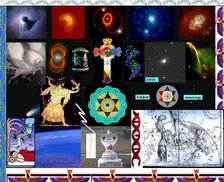
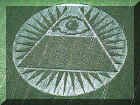
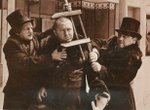
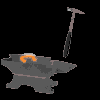


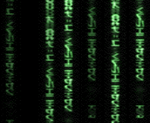
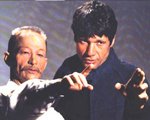

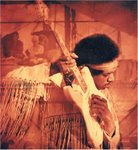





























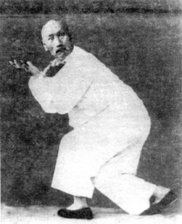


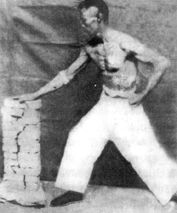


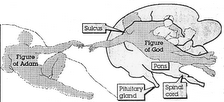


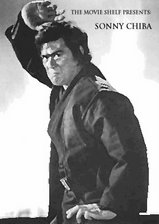

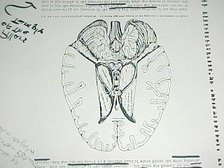

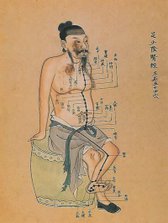
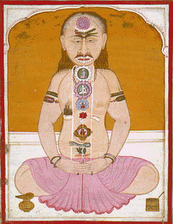



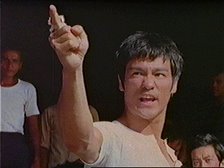








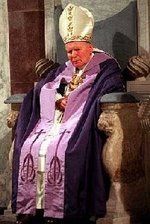






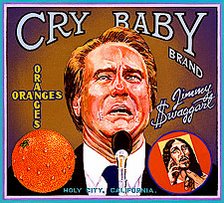

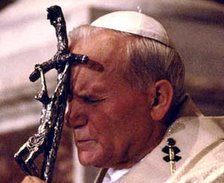
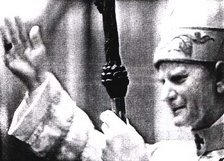

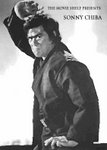
















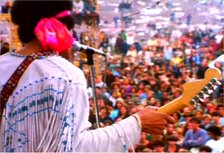

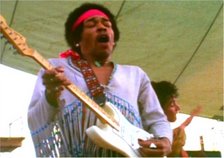
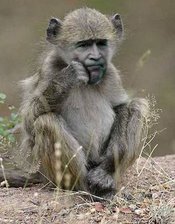

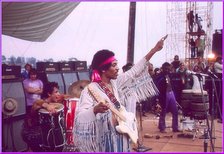





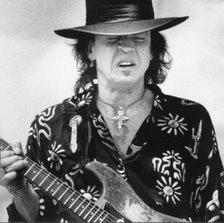




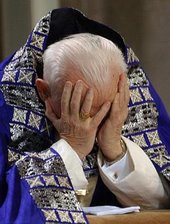







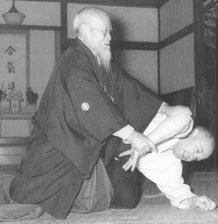
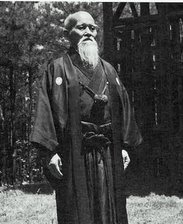
















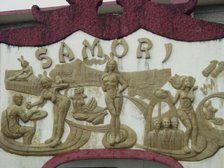





















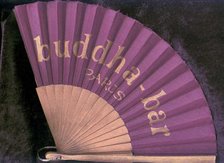
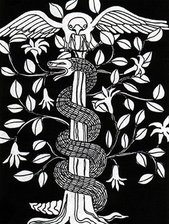








No comments:
Post a Comment